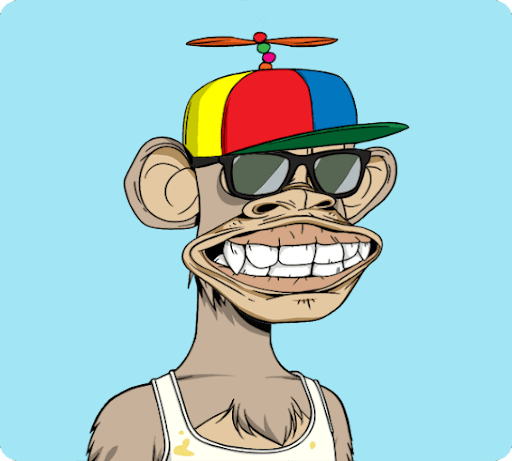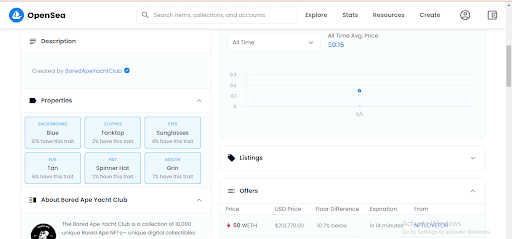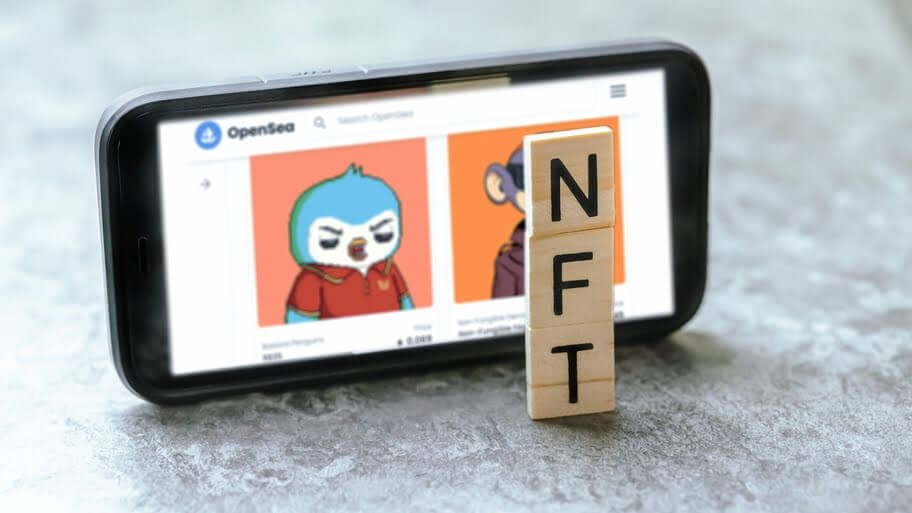NFTs have become so popular that they were even chosen as the 2021 word of the year by Collins Dictionary. As the NFT surge floods the digital space, one question investors commonly ask is how to determine the rarity of an NFT?
Rarity is a critical factor to consider when purchasing a non-fungible token. The greatest NFTs are uncommon and much sought after by collectors, which drives up their prices.
The Problem
Any collectible NFT item on OpenSea, such as a Bored Ape Yacht Club Mutant Ape, has a plethora of characteristics (or traits).


Bored Ape Yacht Club#795 properties
By analyzing the properties above, you can be able to deduce that an NFT possesses certain distinctive properties. However, how rare is this NFT in comparison to others? Do you just compare the rarest trait of two NFTs when comparing them? This raises several questions: What combination of rare traits qualifies an NFT as rare? How is the total rarity of a single NFT determined?
Bored Ape Yacht Club#3368 properties….is this NFT more rare than # 795 above?
Due to the fact that each NFT has several traits, then there must be a means to integrate the rarity of all the traits into a single value for each NFT to rank them effectively. It can be perplexing, given that it is an artwork that is subjective at times. For example, beauty and appeal is subjective, and you never know what someone will pay for your NFT. Additionally, it is contingent upon how the community views certain traits or the collection in general. However, in this piece, we will look at how users have been able to rank the rarity of their NFTs.
First, we will compare the two apes mentioned above to #3410 here.
Ranking of the Rarity Traits
Ranking of rarity traits refers to the process of ranking NFTs by comparing the rarest trait of each NFT. For example, consider the following comparison of the Apes:
-
-
- The Bored Ape #795 possesses the rare traits of Tanktop and Spinnerhat, which have 2% each, meaning that only 2% of other Apes have them.
- The Bored Ape #3368 has the rare trait of the Irish Boho trait, and only 2% of the Apes have them
- The Bored Ape #3410 has the rare trait of the Bored pipe which only 1% of other Apes have
-
The sequence would be #3410, #3368, and #795 if the ‘Trait Rarity Ranking’ were used in assessing their rarities.
Even though it is a straightforward procedure, its drawback is that it only assesses the rarest trait for every NFT. It disregards the overall rarity of the NFTs in favor of the rarest trait. Other NFT rarity approaches are better at calculating the rarity of NFTs.
Average Rarity of Trait
A different technique that is utilized is averaging the rarity of traits in an NFT. For instance, if an NFT possessed two traits, one with a 10% rarity and another with a 20% rarity, its average trait rarity would be (20+10)/2 = 15%.
For our Bored Apes example, we have:
The Bored Ape #795 with an average trait rarity is 7.5%
The Bored Ape #3368 with an average trait rarity is 6.2%
The Bored Ape #3410 with an average trait rarity is 5.25%
As a result, the order would be entirely flipped from the former way when using this method. Their positions would be #3410, #368, and #795, respectively.
There are even more ways of ranking NFT rarity, which will be discussed below.
Opensea Rankings
For collectors, OpenSea provides an extensive ecosystem, with the NFT shop and data all in one place. OpenSea is the most popular and largest NFT marketplace. In addition to facilitating NFT sales, it also displays NFT rankings based on volume, floor price, and other metrics.
If you want to see the most popular collections during the previous 24 hours, 7 days, 30 days, or all time, you can find them at OpenSea. This is a terrific way to learn about the latest trends in the NFT collectible world so that you can make appropriate investment decisions.
Although you can view the traits and their rarity for each NFT, you will not be able to determine its total rarity rank and overall rarity score. This is an obvious disadvantage, but the availability of a marketplace and real-time rankings simplify the process of selecting an NFT for a purchase.
It’s ideal to utilize the OpenSea ratings and activity stats in conjunction with any of the other tools discussed here. Having all the information in one place makes it easy to choose the finest NFT for your needs.
Traitsniper
If you’re seeking precise information about new NFT projects, you may try Traitsniper. The tool is solely focused on current and forthcoming projects. Each time a new project is released, the Traitsniper bot analyzes the rarity of the NFTs.
There are both free and premium versions, with the paid version providing additional features such as real-time alerts of new reveals and their score. In contrast to the rarity ranking outlined above, Traitsniper assists you in getting started; after you’ve mastered it, you may pick a specific NFT to view its Rarity Score, Rarity Rank, OpenSea Price, and OpenSea Highest Offer. Additionally, you may view the various traits and their associated rarity score using their mining simulator rarity list.
Wrapping Up
What precisely qualifies NFTs as rare is often subjective. NFTs from a renowned crypto artist such as Josie Bellini or a celebrity such as Snoop Dogg can easily pass as rare due to their creator or endorsement. However, when it comes to NFT collections, including hundreds of NFTs, the total rarity of such an NFT is determined by the rarity of each trait.
Finally, like with any asset, investing in NFTs has many dangers. While investing tools like the OpenSea rankings are an excellent way to determine the rarity of NFTs, they should not be the main criterion for purchasing NFTs. A good rule of thumb is to combine these methods with personal due diligence before venturing into your first NFT purchase. Ensure you conduct your research and thoroughly understand the market and key terms like NFT rarity.
Featured Image: Twenty20








